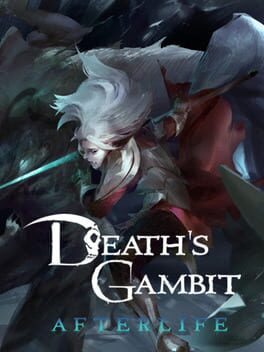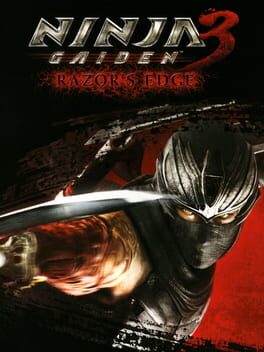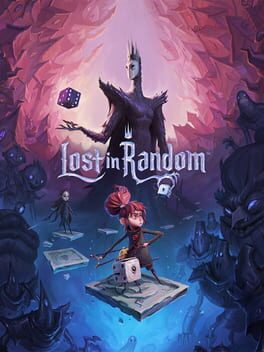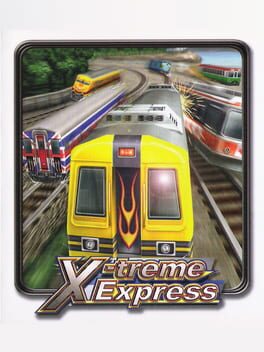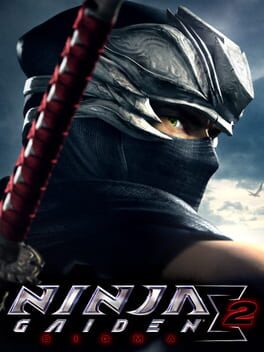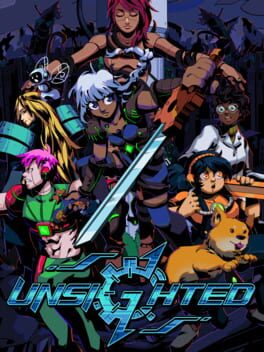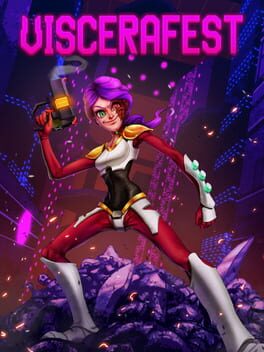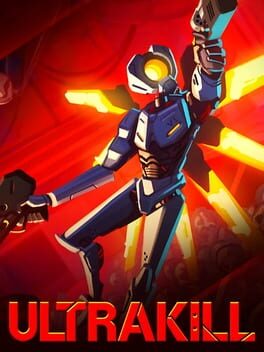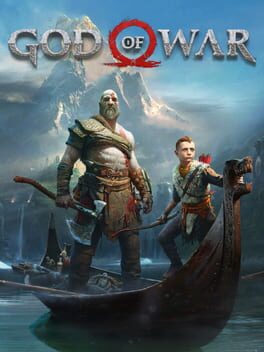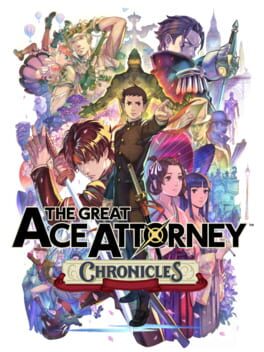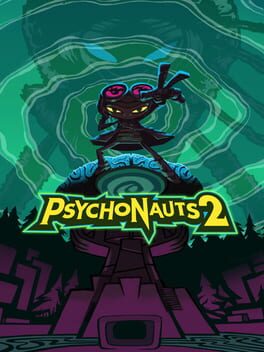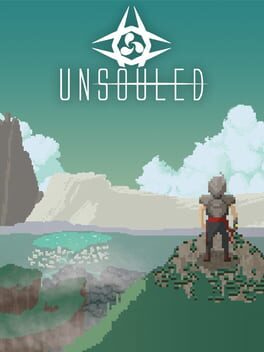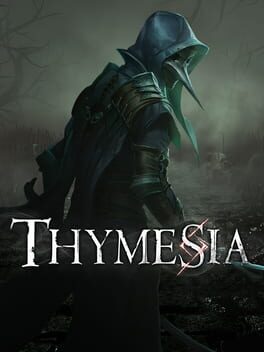MaddisonBaek
Yeah, this is a step up from the original and the new contents are generally good. But I have to say, their sound feedback is still bad. And the final part can really drag even considering that this game was a story-exposition-heavy game for a souls-like. If you liked the original, then you should try it.
Honestly, it wasn't THAT bad. In fact, the good parts -such as the arena fights with humanoid or fiend enemies - were really good enough to be considered as perfection. But the downsides are really impossible to ignore. Though it was impossible to solve those problems from the start since this game is based on NG3 which is known as a trash fire.
2015
2021
Ironically, this shows a similar issue from Alice: Madenss Reurns which was also a dark fantasy fairy tale action game published by EA 10 years ago. There is a promising foundation of combat loop, but the lack of enemy variety and combat option (in this case, the deck variation) hinders the quality of this game as a whole. And aside from the combat features, this game lacks interesting non-combat elements (considering that this game is technically an "adventure" genre, this is kinda alarming). At least the visual style was fascinating though.
2002
2009
2021
It's surely a good game. The core mechanic is well-built, The dungeon design is pretty "classic" and it's bold that they actually have an actual time limit that will end your progress -which is quite manageable, but still gives you a mindset of "I need to play this really efficiently and swiftly as possible". But the combat can be easily broken by the generous parry system, especially against the end-game enemies which were shown as the "unbeatable foe" at the tutorial. It's quite sad because there are many other combat options that make you move a lot, which can make some interesting movement-based combat situations. (Yes, there were plenty of encounters that forces you to move a lot. The semi-final boss comes to my mind. But there should have been more IMO)Then again, I played it only on Action-girl difficulty, which is the "normal" difficulty for this game. Maybe the encounters can be changed on a higher difficulty? So, please take this review with a grain of salt.
2021
2020
2021
This is a review after I played Act 1 on Drunk difficulty. It's a pseudo-build-engine-FPS (which is made with unreal) that focuses on player mobility. The level designs are good. Generally reminds me of the levels from Blood where the dungeon-like elements and realistic area design get crossed. Enemy variation is alrighty. At first, there are only melee thugs and average bullet shooter enemies but after the midpoint, the roaster widens enough to make several types of enemy encounters and arenas, which is great! I really liked that every projectile is avoidable with careful movements since they aren't hit scanners. I do wish the melee enemies had better tracking ability though. The shield chargers are really easy to punish just by sidestepping because of that. The weapons are varied enough to deal with several types of encounters but I do think the shotgun is a little bit underwhelming because of its small scope size. It's so easy to miss an enemy even on point-blank distance. Also, the weapon swapping is a little bit clunky. Don't expect it to be Ultrakill or Doom Eternal where you can swap the weapons to make a devastating chain of combo. For the game that is trying to recreate the build engine FPS experience, I think the weapons are working as they are meant to be, and Sisu mode is a nice twist on the formula, but I do wish it was less rigid than that. Overall it's a solid game and I hope Act 2 will be better than Act 1.
2018
As much as I appreciate that this is one of those triple-A games that at least try to emphasize gameplay mechanics with a good amount of options while maintaining the triple-A production value, There are still plenty amounts of cons I can nitpick such as the static contextual movements that hinders fast explorations, the damage reduction and parry-possibility tied with the whole leveling mechanic, the wall-colliding camera that doesn't work well with multiple enemies, bad fast traveling system contextualized by the god damn single-camera cinematics, lack of champion enemy variety, inconsistent Valkyrie movesets, and most of all, movement correction for all the characters in the battlefield. I'm still hopeful about the sequel though, as my time spent on this game doesn't feel like it is wasted for absolute nothing.
2021
2021
I was a backer of this project and have play-tested the early builds before the developer has announced that this game is going to be published by Neowiz. If you really want to see the game that pushes the limitation of stamina-action game mechanics (AKA souls-like), You guys need to play this game. Imagine someone mixed Hyper Light Drifter, Sekiro, 3D Ninja Gaiden, and Tekken in an iron pot and condensed it into a 5~8 hour game. Definitely one of the best action games in 2021, even without the context that this game was developed by one person for five years. Sure, there are some issues like kinda dull pixel graphics and the bosses(Especially the hidden ones and the final boss) becoming REALLY bullshitty with their unpreventable combos, but hey, the dev guy is a Tekken fan so it is understandable.
2022
Even though I fairly enjoyed Sekiro, one thing Sekiro getting GOTY 2019 made me concerned the most is that a lot of future dev will think of it as the pinnacle of action game design method and will make a bunch of copycats.
To put my perspective, Sekiro's parry-oriented reaction-based combat system had its own limits. The fast movement options exist, but with the lack of long I-frames and uber-tracking enemies, the crowd controlling in group fights always felt atrocious and it always led me to play defensively. And in 1 vs 1 combat, the positioning options were borderline non-existent as the blocking and jab can deal almost all patterns in one single place while the dodging and zooming always felt risky as hell unless the patterns are deliberately designed to be dodged. There were some neat bosses that tried to shake things off in the game flow, but overall, I couldn’t get rid of the feeling that it wasn’t as dynamic as I expected it to be. And the current red ocean of stagnating Souls-like trend tells me that this formula won’t likely be implemented and improved by other devs that easily unless that dev is already experienced like Team Ninja or Deck 13 (And Deck 13 took two atrocious projects to finally make The Surge 2).
I talked about Sekiro for a moment because Thymesia is seemingly a blatantly Sekiro-like game, and it is not possible to not compare it to that when you watch the gameplay footage. Enemies have a twin health system. The Player’s parry move can deal damage to enemies while negating the incoming dangers. Enemies track you like a teacup on a slippery coaster. Almost all enemies have off-beat attacks to make it hard to parry… and so on. However, I couldn’t resist playing it because the plague mask looks cool as hell, and the setting looked cool in the trailer. It had a flying zombie bat monstrosity and a fancy circus master that has some cool grab moves. Surely this game would be an unhinged theme park of Tim Burton-ish nightmare, right….?
Well, I got a completely different experience from what I expected. It showed me a promising twist of the Sekiro-combat system but a lackluster theming and content that couldn’t reach the hype that the trailer induced.
The baseline is similar, but as you learn the game, you will realize that the player’s arsenals are more varied than you initially saw and each of them has its own role in a combat cycle. The normal slash attacks deal heavy damage to the “first layer” of the health bar while the claw attacks deal heavy damage to the “second layer” of the health bar. The plague weapons have different damage values depending on your weapon choice. The interesting thing about the enemy health system is that if you deal damage to them and wait, the first layer of health will automatically regenerate to the amount of the second layer, and the first layer must be deflated to deal damage to the second layer. Unlike Sekiro where if you deflate the health a bit, the posture bar becomes no issue at all, you need to try your best to juggle your methods to deflate both bars and I really liked that idea. The swappable plague weapons are also the best contributors to the combat cycle as you can hold them up to three (one by stealing from the enemies) and quickly initiate them. And most plague weapons are designed to be combo-supplement rather than one-method to one-problem skills like Sekiro’s prosthetic tools, so there were enjoyments to find by pushing the enemies with consecutive plague weapon combos. By juggling the tools available, your combat cycle becomes like a mad doctor’s surgical procedure – skinning them with a saber, then slamming the cursed plague combination inside their body, and then brutally slashing them to finish off, which is pretty fitting to the main character of this game.
There’s a little bit of "but…" in the player arsenals though. And that is the plume throw attack. It’s like a magical dart that is specialized to neutralize the “special” attacks from the enemy, but if you learn the “mikiri counter” of this game, there’s seemingly no reason to use this tool to use as a counter maneuver at all. There’s an upgrade where you can auto-zoom-teleport to the opponent with the plume, but it felt like tacked on since gap-closing to an enemy is not a big issue in this game, but more on that later.
Another thing I liked about the game is that the “upgrade” system is really liberating and works satisfyingly in the early-mid game section. By making the upgrade points retractable, the game directly encourages you to try out different skill trees anytime. There are different types of dodges, blocking, saber attacks, claw attacks, and passive buffs that can be easily experimented with this liberty. However, the upgrade points aren’t available that many early on, so there’s also a trade-off you have to think about. The vanilla character setting can be clumsy, so you need to decide which tools to adapt with your sheer will and skill, and which tools to supplement. But as I said before, that doesn’t take away the chance to try out different tools. I was stuck at Odur boss fight for some time because he has some tricky melee patterns that cannot be “intuitively” parried and for an early boss, he clearly has some tricks in his sleeves. To supplement the “skill issue” I had, I swapped the skill trees that can pull out the big damage output while tanking some hits, and I enjoyed the procedure of finding the balance that suits my combat style. But as the game goes on, you will realize that once you reach the end of the skill trees, things go messy.
Now we are on the negative side - the contents.
The low-hanging fruit is that Thymesia is really short, and the enemy variety is lacking, even worse than Sekiro or Nioh 1. There were some interesting enemies with distinguishable features like a small jester miniboss, fat hammer wielder, and sword and shield guy, but most of them felt interchangeable with small timing and positioning differences. This is utterly disappointing because there’s an entire laboratory level that is themed around grotesque animal experiments, and what they could have done is to add more experimented-animal-type of enemies that don’t work like other humanoid enemies, and then mix them up in every level’s corner with the lore that “they escaped from the lab lol”. At the near end of the game, the only dynamic encounters left in the field are the handful of boss fights.
This feels sad because the moderately-upgraded Corvus can initiate the crowd control and positioning more liberally than Sekiro. At the late stage, I intentionally aggroed multiple enemies in one combat zone so that I can try out some multi-enemy fights as an experiment. By utilizing plague weapons (I used Katar and Scythe in that scenario), upgraded dash movement, claw attacks, and “mikiri counter”, dash movement could negate the tracking attack because the movement distance was wide enough, charged claw attacks were great as a gap closer, and the two Plague Weapons I wielded were so effective at managing Corvus’s health and positioning. I had an enjoyable crowd fight that felt FAIR, and it was way more dynamic than 70% of the normal encounters in the game. This also means that even if the enemy variety is lacking, just by adding more aggressive enemies in the combat situation, things could have been more interesting in the late game, but they didn’t. Most of the enemies are initially spawned as a passive “sitting” state so that unless you intentionally get near them, there’s no direct engagement you’ll face. Enemy sight detection is mind-numbingly dumb that it’s always easy to attack first when they are showing their back. Champion enemies ALWAYS initiate the fight as 1 vs 1 and I don’t know why the devs decide to go safe with the multi-hard-enemy idea, considering that the same “type” of champion enemies appears more than several times per the whole playthrough, and they are all spawned isolated.
The question of “Why didn’t they go more than this?” doesn’t end at the enemy encounters. It also spreads on the theming and the presentation that supports them.
- Why aren’t there any other survivors or any interesting NPC that can tell the lore or build up the stake for the main character who is a doctor/alchemist saving the world? Why are there only papers?
- Why the idol boss looks like the most boring-looking tree giant creature considering that they could have add the circus elements to give the consistency that it is an Odur’s creation.
- If this is all about memories, Couldn’t they add more surreal scenes or presentations that could establish the other-worldly elements? Arguably only the final boss stage has that element.
- Overall, how is this world distinguishable from other souls-like dark fantasy games that contain plague elements and crumbling down medieval fortress?
Even with some downfalls, I liked Sekiro’s experience because even if the message and the narrative is vanilla as hell, at least they were unhinged about the presentation, (especially with the Guardian Ape and the Divine Dragon), and thematically everything worked together to present a bloodshed-epic-journey of a-nobody-shinobi. I had fun with this game, but I couldn’t shake off the feeling that they were holding back too many things that it led to a quite underwhelming experience. At least there’s a silver lining that they are eager to innovate and refine the game system that most other studios stagnate to dust, so I hope they make even more extreme works next time with that mindset. Maybe escaping from the FROM’s mold is one of the methods. I don’t know.
And where the hack are the voice actors? There aren’t many dialogues in the game, and freelancers are affordable for most studios. I just don’t get it…
To put my perspective, Sekiro's parry-oriented reaction-based combat system had its own limits. The fast movement options exist, but with the lack of long I-frames and uber-tracking enemies, the crowd controlling in group fights always felt atrocious and it always led me to play defensively. And in 1 vs 1 combat, the positioning options were borderline non-existent as the blocking and jab can deal almost all patterns in one single place while the dodging and zooming always felt risky as hell unless the patterns are deliberately designed to be dodged. There were some neat bosses that tried to shake things off in the game flow, but overall, I couldn’t get rid of the feeling that it wasn’t as dynamic as I expected it to be. And the current red ocean of stagnating Souls-like trend tells me that this formula won’t likely be implemented and improved by other devs that easily unless that dev is already experienced like Team Ninja or Deck 13 (And Deck 13 took two atrocious projects to finally make The Surge 2).
I talked about Sekiro for a moment because Thymesia is seemingly a blatantly Sekiro-like game, and it is not possible to not compare it to that when you watch the gameplay footage. Enemies have a twin health system. The Player’s parry move can deal damage to enemies while negating the incoming dangers. Enemies track you like a teacup on a slippery coaster. Almost all enemies have off-beat attacks to make it hard to parry… and so on. However, I couldn’t resist playing it because the plague mask looks cool as hell, and the setting looked cool in the trailer. It had a flying zombie bat monstrosity and a fancy circus master that has some cool grab moves. Surely this game would be an unhinged theme park of Tim Burton-ish nightmare, right….?
Well, I got a completely different experience from what I expected. It showed me a promising twist of the Sekiro-combat system but a lackluster theming and content that couldn’t reach the hype that the trailer induced.
The baseline is similar, but as you learn the game, you will realize that the player’s arsenals are more varied than you initially saw and each of them has its own role in a combat cycle. The normal slash attacks deal heavy damage to the “first layer” of the health bar while the claw attacks deal heavy damage to the “second layer” of the health bar. The plague weapons have different damage values depending on your weapon choice. The interesting thing about the enemy health system is that if you deal damage to them and wait, the first layer of health will automatically regenerate to the amount of the second layer, and the first layer must be deflated to deal damage to the second layer. Unlike Sekiro where if you deflate the health a bit, the posture bar becomes no issue at all, you need to try your best to juggle your methods to deflate both bars and I really liked that idea. The swappable plague weapons are also the best contributors to the combat cycle as you can hold them up to three (one by stealing from the enemies) and quickly initiate them. And most plague weapons are designed to be combo-supplement rather than one-method to one-problem skills like Sekiro’s prosthetic tools, so there were enjoyments to find by pushing the enemies with consecutive plague weapon combos. By juggling the tools available, your combat cycle becomes like a mad doctor’s surgical procedure – skinning them with a saber, then slamming the cursed plague combination inside their body, and then brutally slashing them to finish off, which is pretty fitting to the main character of this game.
There’s a little bit of "but…" in the player arsenals though. And that is the plume throw attack. It’s like a magical dart that is specialized to neutralize the “special” attacks from the enemy, but if you learn the “mikiri counter” of this game, there’s seemingly no reason to use this tool to use as a counter maneuver at all. There’s an upgrade where you can auto-zoom-teleport to the opponent with the plume, but it felt like tacked on since gap-closing to an enemy is not a big issue in this game, but more on that later.
Another thing I liked about the game is that the “upgrade” system is really liberating and works satisfyingly in the early-mid game section. By making the upgrade points retractable, the game directly encourages you to try out different skill trees anytime. There are different types of dodges, blocking, saber attacks, claw attacks, and passive buffs that can be easily experimented with this liberty. However, the upgrade points aren’t available that many early on, so there’s also a trade-off you have to think about. The vanilla character setting can be clumsy, so you need to decide which tools to adapt with your sheer will and skill, and which tools to supplement. But as I said before, that doesn’t take away the chance to try out different tools. I was stuck at Odur boss fight for some time because he has some tricky melee patterns that cannot be “intuitively” parried and for an early boss, he clearly has some tricks in his sleeves. To supplement the “skill issue” I had, I swapped the skill trees that can pull out the big damage output while tanking some hits, and I enjoyed the procedure of finding the balance that suits my combat style. But as the game goes on, you will realize that once you reach the end of the skill trees, things go messy.
Now we are on the negative side - the contents.
The low-hanging fruit is that Thymesia is really short, and the enemy variety is lacking, even worse than Sekiro or Nioh 1. There were some interesting enemies with distinguishable features like a small jester miniboss, fat hammer wielder, and sword and shield guy, but most of them felt interchangeable with small timing and positioning differences. This is utterly disappointing because there’s an entire laboratory level that is themed around grotesque animal experiments, and what they could have done is to add more experimented-animal-type of enemies that don’t work like other humanoid enemies, and then mix them up in every level’s corner with the lore that “they escaped from the lab lol”. At the near end of the game, the only dynamic encounters left in the field are the handful of boss fights.
This feels sad because the moderately-upgraded Corvus can initiate the crowd control and positioning more liberally than Sekiro. At the late stage, I intentionally aggroed multiple enemies in one combat zone so that I can try out some multi-enemy fights as an experiment. By utilizing plague weapons (I used Katar and Scythe in that scenario), upgraded dash movement, claw attacks, and “mikiri counter”, dash movement could negate the tracking attack because the movement distance was wide enough, charged claw attacks were great as a gap closer, and the two Plague Weapons I wielded were so effective at managing Corvus’s health and positioning. I had an enjoyable crowd fight that felt FAIR, and it was way more dynamic than 70% of the normal encounters in the game. This also means that even if the enemy variety is lacking, just by adding more aggressive enemies in the combat situation, things could have been more interesting in the late game, but they didn’t. Most of the enemies are initially spawned as a passive “sitting” state so that unless you intentionally get near them, there’s no direct engagement you’ll face. Enemy sight detection is mind-numbingly dumb that it’s always easy to attack first when they are showing their back. Champion enemies ALWAYS initiate the fight as 1 vs 1 and I don’t know why the devs decide to go safe with the multi-hard-enemy idea, considering that the same “type” of champion enemies appears more than several times per the whole playthrough, and they are all spawned isolated.
The question of “Why didn’t they go more than this?” doesn’t end at the enemy encounters. It also spreads on the theming and the presentation that supports them.
- Why aren’t there any other survivors or any interesting NPC that can tell the lore or build up the stake for the main character who is a doctor/alchemist saving the world? Why are there only papers?
- Why the idol boss looks like the most boring-looking tree giant creature considering that they could have add the circus elements to give the consistency that it is an Odur’s creation.
- If this is all about memories, Couldn’t they add more surreal scenes or presentations that could establish the other-worldly elements? Arguably only the final boss stage has that element.
- Overall, how is this world distinguishable from other souls-like dark fantasy games that contain plague elements and crumbling down medieval fortress?
Even with some downfalls, I liked Sekiro’s experience because even if the message and the narrative is vanilla as hell, at least they were unhinged about the presentation, (especially with the Guardian Ape and the Divine Dragon), and thematically everything worked together to present a bloodshed-epic-journey of a-nobody-shinobi. I had fun with this game, but I couldn’t shake off the feeling that they were holding back too many things that it led to a quite underwhelming experience. At least there’s a silver lining that they are eager to innovate and refine the game system that most other studios stagnate to dust, so I hope they make even more extreme works next time with that mindset. Maybe escaping from the FROM’s mold is one of the methods. I don’t know.
And where the hack are the voice actors? There aren’t many dialogues in the game, and freelancers are affordable for most studios. I just don’t get it…
